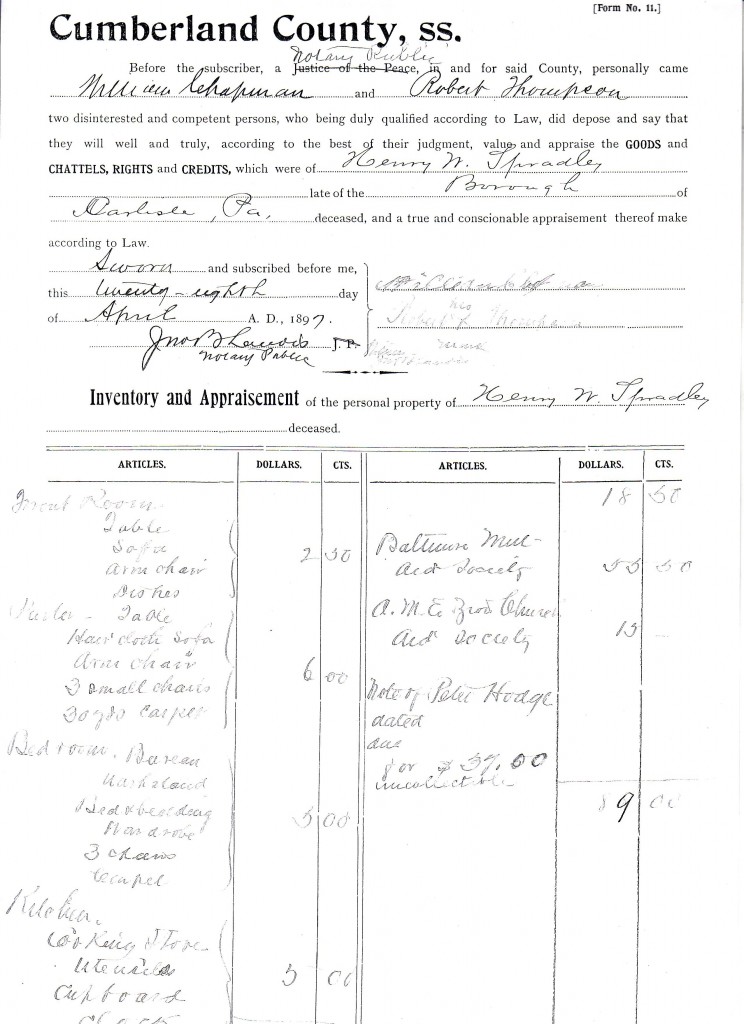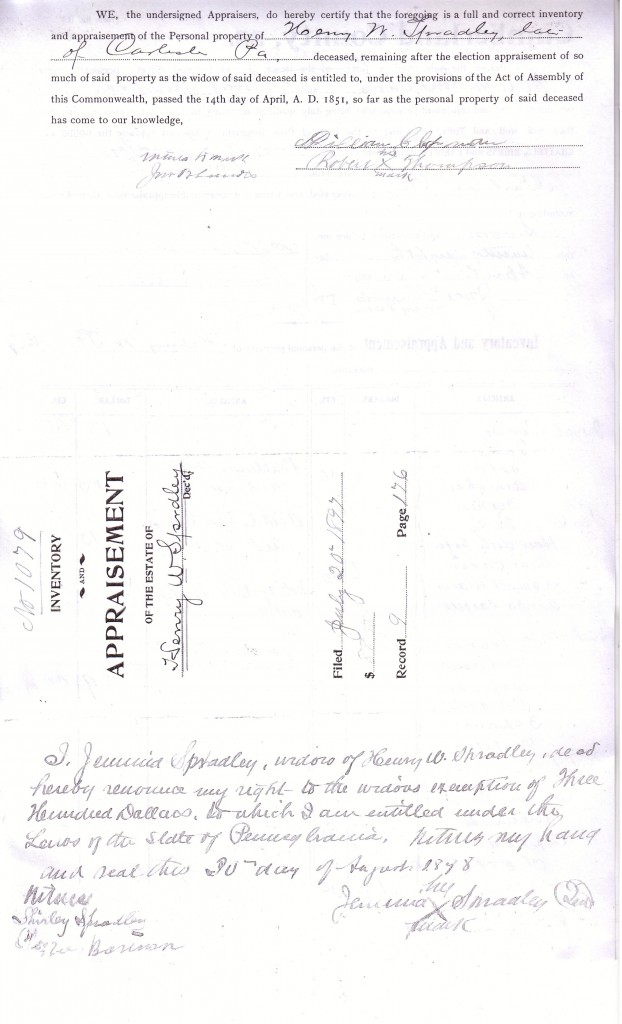I have been continuing to look for information to on Henry W. Spradley, the African American veteran buried at the former Lincoln Cemetery. Searching through microfilm at Dickinson College and CCHS, as well as researching further at CCHS, I have been able to learn even more about Mr. Spradley.
To start, I found his database record at the Civil War Research database, under the name Henry Williams. It appears that he used this name, as shown on his pension records, during the war. Obviously, there are many reasons why a former slave may have used an alias, but I do have any documentation to explain this yet. Newspapers show that he was definitely called Henry W. Spradley after the war though.
American Volunteer – April 14th, 1897
This newspaper article, available on microfilm at Dickinson College library, was difficult to clear up to get a good and close image. However, the article is very big for my research. It explains that Spradley was born into slavery in Winchester, VA, confirms that he enlisted in the 24th USCT, and then says he came back to Carlisle and became a stone mason. Furthermore, it highlights that students called him “Sprad” as a nickname. It also explains where his children were living at the time, which could be great to follow up on his family. Finally, what I thought was a very big discovery, the article says that Spradley and his wife lived in the basement of East College! This would likely have been what we consider the first floor, since there use to be steps that went up to the second floor of old East College. Talking with the archivists at Dickinson College, it is definitely possible that he lived at the college.
At CCHS, they have microfilm available for the Evening Sentinel, the third newspaper that covered Spradley’s funeral. I found three mentions of him from April 10th, April 12th, and April 13th.
These three Evening Sentinel newspaper articles add and confirm a whole additional layer of information. It seconds the fact that he had been born into slavery, how he died, and where his family lived. It adds that he was the treasurer of A.M.E. Zion Church, that he was a member of the G.A.R. of Carlisle Post 440, and even that he died at exactly 9:45pm. I will stop here to note a number of discrepancies to consider with this article. Whoever wrote it made a number of mistakes, such as that he died at age 67, not 68, he was born in 1830, not 1829, I believe he did not enlist until 1865 and as the third article explains, he was not the senior Janitor. One major error came in the date on the newspaper. It says it was written on Saturday, April 9th, 1897, which would imply that Spradley died on April 8th. However, I know from the other newspapers that April 12th was a Monday and the 13th a Tuesday, so Saturday would have to have been the 10th. Nonetheless, this article furthers the knowledge on Henry Spradley and backs up the information of the two other newspapers.
Finally, I was really excited to find Henry Spradley’s appraisal at the Cumberland County Historical Society. I started searching around for his name in their archives and found the following document, courtesy of CCHS.
This inventory and appraisement tells us so much about Henry Spradley, more than I am probably able to comprehend so far. It shows what items the Spradley’s owned and how much they were worth. The items are organized by front room, parlor, bedroom and kitchen, which tells us how he lived to some extent. The article on the right are definitely harder for me to interpret as of yet, but I bet some of the amazing archivists I have worked with would know. Then on the back of the document, at the bottom, there is a note written by Spradley’s widow that I have looked over many times. I know that his census records said he was married to a woman name Mina in 1870 and 1880. I also don’t understand what would make his widow exempt herself from $300. I will hopefully clear up all the questions about this document by having an archivist or Professor provide their input on it. It is a great document for analyzing Spradley’s life and I am glad to have found it.
















